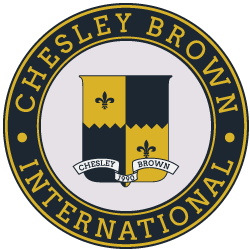Written by: James Hart
The neighborhood watch, one of the oldest tools for community crime prevention, can still be a useful tactic today for combating crime and nuisance activity at commercial properties, especially when combined with a professional security presence.
These programs encourage the public to be on the lookout for suspicious activity in their area. Not only does this give security officers more intel about potential problems, but it also empowers tenants and visitors to help solve problems in their community.
Having more eyes on the street can be a force multiplier for security, increasing their ability to respond to safety concerns.
“Every set of eyes is a benefit to the safety and security of a building or a property,” said Josh Noland, vice president of western operations for Chesley Brown International, the security consulting and management firm.
“We may not be seeing the same thing that you’re seeing. Unless someone tells us what’s happening, we may not know.”
In this post, we’ll talk about how private security and watch-type programs can work together to better target and deter illegal activity. But first, let’s learn a little more about neighborhood watches.
What is a neighborhood watch? And how does it work?
A neighborhood watch is a group of volunteers who look for suspicious activity in their community and report problems to law enforcement.
Most neighborhood watches typically coordinate with a sheriff’s or police department to ensure volunteers are professionally trained to know what “suspicious activity” actually means. The groups also hold regular meetings to plan their efforts and share information.
Generally speaking, watch volunteers are only supposed to “observe and report” — they are not equipped to confront or arrest anyone who is actively breaking the law. The good news is that simply having a watch can deter burglars and other troublemakers from operating in a neighborhood. Volunteers can also help draw police attention to problems that might otherwise escape notice.
(While looking for suspicious activity is usually Job 1 for a watch program, many also take on other service projects, like sponsoring block cleanups, youth sports leagues and public safety fairs.)
In the U.S., neighborhood watch programs gained popularity in the 1960s as more homeowners became concerned about burglaries. In 1972, the National Sheriffs’ Association and others formally created the National Neighborhood Watch to share best practices and training.
Arguably, the basic idea of neighborhood watches — of citizens watching over their community — goes back much further. Volunteer-operated night watches helped guard the streets of 1200s England. Watches were also an early fixture in colonial communities, too.
Creating neighborhood watches for commercial properties
The popular idea of a neighborhood watch is usually of, well, neighbors — homeowners working to prevent crime in a residential area. But there are versions designed specifically for businesses. National Neighborhood Watch has information about business watches right here.
In addition to teaching members how to spot signs of suspicious activity, a business watch also shows merchants how to crime-proof their properties and encourages business owners to share information with each other. In fact, some business watches might even start an email list or calling tree to disseminate information within the larger group.
“The more people that are paying attention,” Noland said, “the quicker that something can be done about whatever may be wrong.”
Another popular model is built around Community Improvement Districts (CID). (You might also know them as a Business Improvement District.)
With a Community Improvement District, a group of property owners vote to form an entity that will charge some form of assessment (often a sales tax or property tax) to pay for physical improvements there, such as streetscape work or new signage, or special services, like marketing or private security. A watch-style program can be combined with a CID’s security team.
Chesley Brown provides security services to several CIDs, “and in a sense, it is the CID’s neighborhood watch,” Noland said. But they’ve found that encouraging communication with merchants, tenants, and the public to be helpful.
As part of its service, Chesley Brown will attend monthly meetings for people who live and work in the CID. The company’s security team will give updates about the problems that its team has noticed. The meetings are open to the public, and attendees are encouraged to bring up things they’ve noticed too. Employees at certain types of businesses — like those selling alcohol or electronics — tend to be especially gifted at noticing thefts and other types of problems.
“Any concerns, anything that you’ve seen that maybe you haven’t felt like sharing, pass that along,” Noland said. “This is your opportunity to be involved, to speak out and to contribute.”
The firm will also share crime prevention advice during these gatherings. For example, if car break-ins are on the rise, security officers might encourage merchants to communicate that information to their employees.
Neighborhood watches are ultimately about better communication
Having a watch-style program can help security teams overcome one of the biggest challenges in their job: encouraging direct communication with the public.
There is a lengthy list of reasons why people never contact security. They might not notice anything’s amiss because it’s a sunny day, and they’re in a place where they feel safe. Maybe they see a potential problem, but either minimize it in their heads or just decide they don’t want to get involved.
Or they’ll contact someone else, like the police or the property management office. (And that’s not even getting into stores whose national offices prevent them from getting security involved in certain types of incidents.)
Some of the best contacts, Noland said, are people who have been affected by crime and know how important it is to reach out early.
Another challenge for security teams is the turnover that naturally occurs in commercial properties. Stores close and open. Employees leave and are replaced. And that means security officers must put ongoing effort into outreach.
“It really boils down to consistent communication,” Noland said. “As a security company, we’ve got to stay on top of it. If so-and-so left, or this is a new business opening, I need to make sure that I go in and give them my information so they know that, when there’s an issue, here’s how
you get in touch with security.”
Neighborhood watches in a single-building property
What about office towers? Is it possible to put together a watch-style program in a property like that? If the building is big enough, then yes.
It can be worthwhile to designate a “floor warden” for each level of the building — it might be someone who’s already involved in emergency planning and preparedness for the building. This is someone who can alert security to potential threats. For example, if an employee says they’re being stalked or harassed by a former romantic partner, passing that information along to security can help them keep that person off the premises.
The bottom line on neighborhood watches and commercial properties
Even the biggest and best-trained security team can’t be everywhere, and they simply can’t see everything. That’s why having clear and open communication with tenants, customers and other end-users is so important. Setting up a neighborhood watch-style program is a terrific way to learn about potential problems early and share strategies for preventing different crimes.
One of the keys is showing tenants and other clients that, by engaging with security, they can make a real and measurable difference.
“It’s getting people involved to the point where they are taking action and being proactive,” Noland said. “They’re looking and helping and communicating as opposed to going, ‘Well, there’s security, so I’ll just let them do their thing, and I won’t pay attention to what’s going on around me.’”
Want to prevent and deter crime in your shopping area or Community Improvement District? Tap into Chesley Brown’s ability in security management and consulting, along with its proven track record of excellent service. Contact Chesley Brown today to secure your commercial property and build trust with tenants, customers and other users.
Sign up!
For industry-leading guides and analysis sign up for our blog below.
Latest News
4 Crucial Things To Know About Business Impact Analysis
Risk is not optional. If you own a business, chances are, you will confront risks at some point. What’s more, as your business grows, potential business disruptions will increase in both frequency and harm potential.…
2 Painless Ways to Transition Your Retail Business to Touchless Technology
Why your business should be transitioning to touchless tech right now As a business owner in the retail industry, adjusting to the Covid-19 pandemic is a huge challenge. Nevertheless, you’ve crossed your t’s and dotted…
3 Overlooked Tips to Destress During the Holidays
Bring home holiday gifts without the baggage It’s that time of the year. Some would say the most wonderful time. But for others, the lights and tinsel of the holidays evoke strong memories of the…
Top 5 Problems Facing the Retail Industry
And the best ways to solve them We’ve all heard the Black Friday stories of fist fights breaking out in aisles of the local big-box retailer. To the average person, such stories are humorous. But…
Holiday Safety Tips
3 practical ways to stay safe in 2020 We’ve all heard humorous holiday tales. They make for great entertainment around the table during a turkey dinner. You know the stories–e.g., the time Uncle Frank fell…







